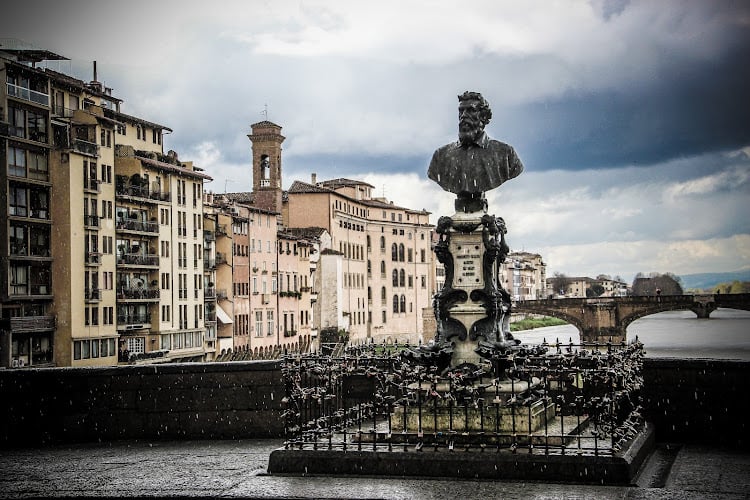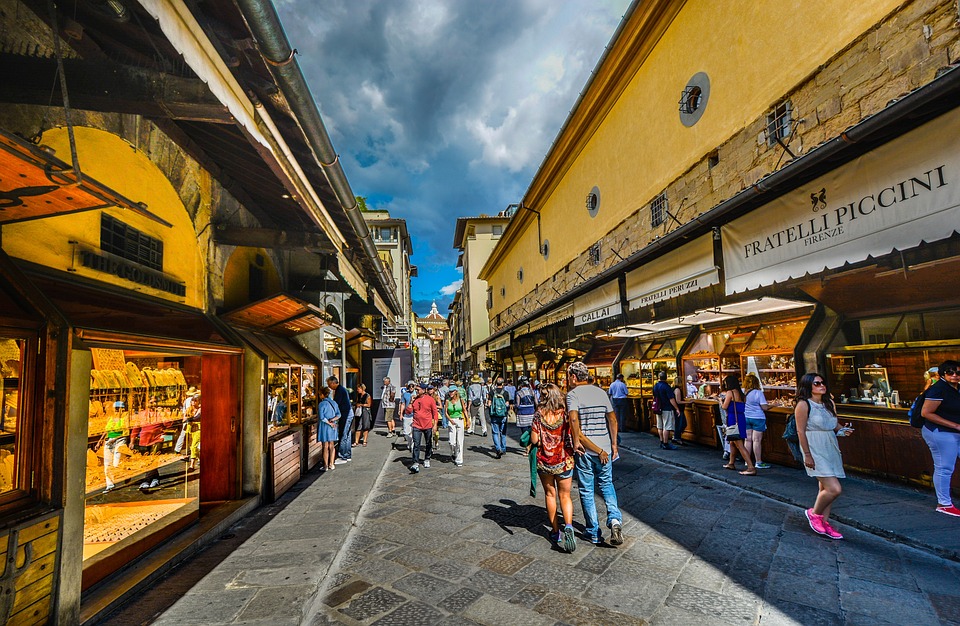With its roots in early Roman times, the Ponte Vecchio is without a doubt one of Florence’s oldest and most well-known symbols. In this Renaissance Tuscan city, it was the first wooden bridge to span the Arno River at its narrowest point and the only bridge to survive the German bombing in 1944.

It was often damaged by fires and floods, and it was once entirely destroyed in 1333 by one of the worst floods ever. Taddeo Gaddi, a pupil of Giotto di Bordone, then rebuilt the bridge in 1345 on three sturdy and creative arches, making it deeper and more secure so that it could withstand the force of the water. The Ponte Vecchio Bridge is a piece of architecture that endured even the most terrible overflow of the Arno River, which on November 4, 1966, brought Florence to its knees.

The bridge was crowded with vendors selling meat, fish, and vegetables to locals in the middle of the fourteenth century. In order to strategically dispose of extra rubbish into the river without lingering and clogging the city’s streets, they were allowed to construct small stores atop the bridge.

Giorgio Vasari, an architect, was hired in 1565 to construct an elevated corridor on the bridge connecting Palazzo Pitti, the new great ducal mansion, to Palazzo Vecchio while passing the Uffizi. To enable Francesco I of the Medici and Giovanna of Austria to go freely between their homes without incurring the risk of danger, this was designed as a tunnel.

The half-mile-long corridor, which became known as the Vasari Corridor in history, was constructed in under five months. Goldsmiths and silversmiths quickly took over the shops in 1593, replacing the fruit and meat merchants as a more refined and fitting tribute to the illustrious Medici Family.

A bronze bust of the famous Florentine master jeweler and sculptor Benvenuto Cellini was built in 1901 by sculptor Raffaello Romanelli. It was located on the expansive terrace overlooking the Santa Trinita Bridge in the middle of the span.

 Undoubtedly, Ponte Vecchio is a location steeped in history; it is impossible to list all the significant events that the bridge has witnessed. However, if you choose to visit this amazing area of Florence, you will not only have the chance to relive fascinating historical moments, but you can also be sure to appreciate the inestimable beauty this bridge has added to Florence’s urban environment.
Undoubtedly, Ponte Vecchio is a location steeped in history; it is impossible to list all the significant events that the bridge has witnessed. However, if you choose to visit this amazing area of Florence, you will not only have the chance to relive fascinating historical moments, but you can also be sure to appreciate the inestimable beauty this bridge has added to Florence’s urban environment.





